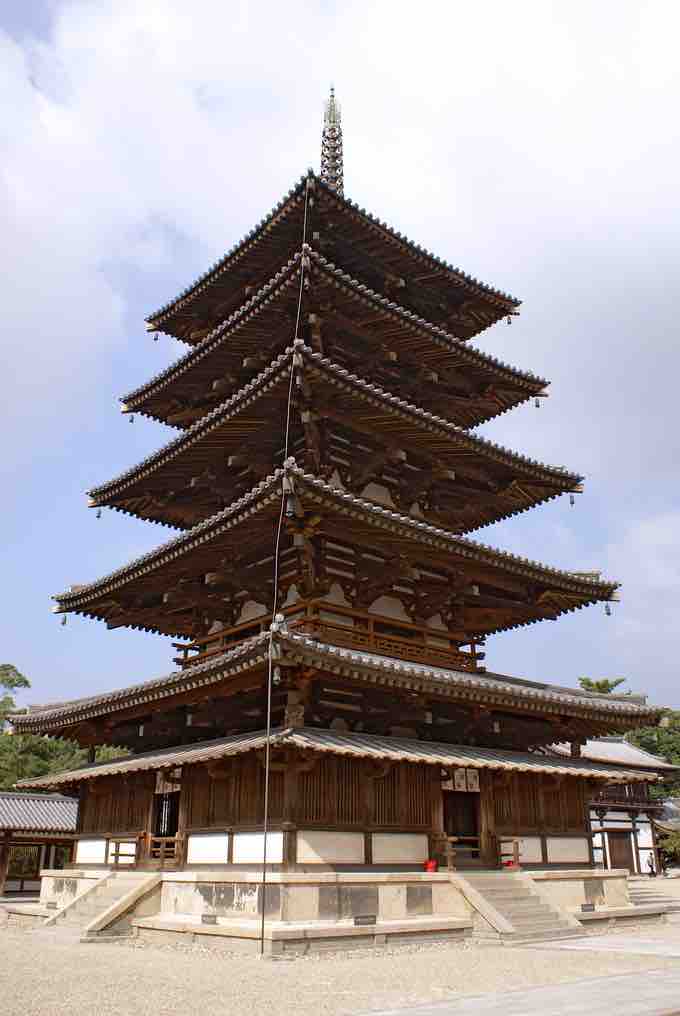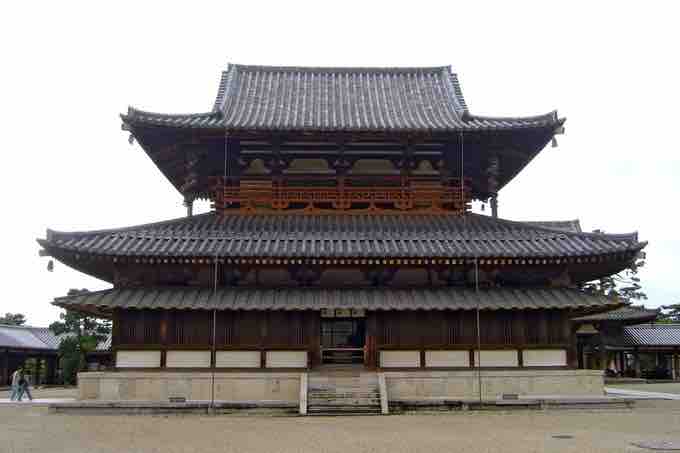Overview
Hōryū-ji is one of the most celebrated temples in Japan. The temple was originally commissioned by Prince Shōtoku of the Asuka Period (c. 538 to 710 CE); at the time it was called Ikaruga-dera (斑), a name that is still sometimes used. This first temple is believed to have been completed by 607 CE. Hōryū-ji was dedicated to Yakushi Nyorai, the Buddha of healing, in honor of the prince's father. The original temple, named by modern historians and archaeologists Wakakusa-garan (若), was lost, thought to be burned down after being hit by lightning in 670. The temple was reconstructed (but slightly reoriented in a northwest position) around the year 711.
Characteristics of Hōryū-ji Temple
The reconstructed buildings embrace architectural influences ranging from the Eastern Han to the Northern Wei of China, as well as from the Three Kingdoms of Korea, particularly the Baekje Kingdom. With its origin dating back to early 7th century, the reconstruction has allowed Hōryū-ji to absorb and feature early Asuka period elements along with distinct elements only seen in Hōryū-ji, which were not found again in the architecture of the following Nara period.
The current temple is made up of two areas: the Sai-in in the west and the Tō-in in the east. The western part of the temple contains the Kondō (sanctuary hall) and the temple's five-story pagoda. The Tō-in area holds the octagonal Yumedono Hall (also known as the Hall of Dreams) and sits 122 meters east of the Sai-in area. The complex also contains monk's quarters, lecture halls, libraries, and dining halls.
Distinguishing Features
Certain features distinguish the precinct of Hōryu-ji from other similar temple architecture. One of the most notable is its layout: while most Japanese temples of the period were arranged like their Chinese and Korean prototypes—with the main gate, a pagoda, the main hall, and the lecture hall on a straight line—the reconstructed Hōryū-ji breaks from those patterns by arranging the Kondō (main hall) and pagoda side by side in the courtyard.
Another example found through the excavations at Yamada-dera, a lost temple originally dated back to 643, is the difference in the style of the corridor. Whereas Yamada-dera had thicker horizontal poles placed much more densely in the windows, those at Hōryū-ji are thinner and placed at larger intervals. On the other hand, major Asuka-style characteristics seen in Hōryu-ji and resembling designs found in the Yungang Grottoes (from the Northern Wei in China) include the railings, decorated with repeat-patterned swastika, and the entasis columns. The other notable Asuka-style element that is only found in Japan, and with the only surviving originals in Hōryu-ji, is the cloud-shape hybrid bracket supporter. These Asuka characteristics are not seen in later Nara period temples.
Pagoda
The five-story pagoda, located in the Sai-in area and standing at 32.45 meters (122 feet), is one of the oldest wooden buildings in the world. The wood used in the pagoda's center pillar is estimated through a dendrochronological analysis to have been felled in 594. The central pillar rests three meters below the surface of the massive foundation stone, stretching into the ground. At its base is enshrined what is believed to be a fragment of one of Buddha's bones. Around it, four sculpted scenes from the life of the Buddha face north, east, south, and west. Although the pagoda is five-storied, it does not allow one to climb up inside but is rather designed to inspire people with its external view.

Hōryū-ji pagoda
The five-storied pagoda has certain characteristics unique to Hōryū-ji.
Kondō
The kondō, located side-by-side to the pagoda in Sai-in, is another one of the oldest wood buildings extant in the world. The hall measures 18.5 meters by 15.2 meters and has two stories, with roofs curved in the corners. Only the first story has a double roof; this was added later in the Nara period, with extra posts to hold up the original first roof because it extended more than four meters past the building. The hall holds the famous Shaka Triad, bronze Yakushi and Amida Nyorai statues, and other national treasures.

The kondō of Hōryū-ji
The two-storied kondō is another one of the oldest wood buildings extant in the world.
Yumedono
Yumedono, or the Hall of Dreams, is one of the main constructions in the Tō-in area, built on the ground which was once Prince Shōtoku's private palace, Ikaruga no miya. The present incarnation of this hall was built in 739 with the purpose of assuaging the Prince's spirit. The hall acquired its present-day common name in the later Heian period, after a legend that says a Buddha arrived as Prince Shōtoku and meditated in a hall that existed here.
Yumedono, Hall of Dreams
Yumedono, a hall associated with Prince Shōtoku